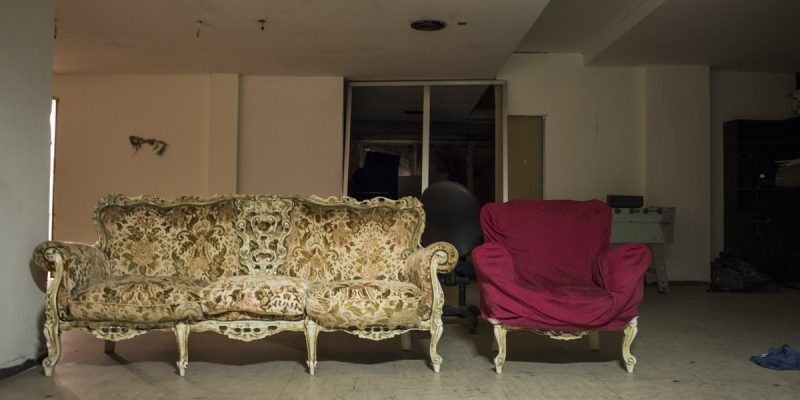At nine o’clock in the evening, there is still a line by the door. Seasonal flu shots are being administered tonight, and people are waiting to be called by the doctor. We are not, however, at an ordinary medical practice: this is a small room on the ground floor of one of the capital’s oldest occupied buildings, the former Faculty of Letters and Philosophy at the University of Rome Tor Vergata. Rising up among the apartment buildings, the shopping malls, and the great ring junction, the Selam (Amarhic for “Peace”) Palace has been a home for hundreds of refugees, asylum seekers, migrants in transit, and long-term residents for over ten years. Every Tuesday, a group of volunteers from the association Cittadini del mondo provides medical and social services. Physician and President Donatella D’Angelo is in charge of health examinations and prescriptions while Marianna, cultural mediators Kibrom and Nour, and the rest of the volunteers try to meet other needs. This is the only space for assistance in this far-flung location, which has been neglected by the city’s authorities.
The history of Selam Palace is similar to that of many other squats in Rome, and emblematic of a system that over the years has both repeated itself and has no solution in sight. The occupation originated with the 2006 evacuation of another historic squat known as Hotel Africa. Left out on the streets, the 400 or so occupants split into several groups: some went to the centre on Via Scorticabove in the neighbourhood of San Basilio while 250 others, mostly Eritreans, moved to Selam Palace. Once again they were evicted and transferred to a shelter, but there were so many protests that the administration eventually allowed the refugees to settle on the top two floors of the building. The other floors were walled in. The city also managed to begin negotiations to move the refugees to reception centres, but when the buses came to take them away, the refugees chained themselves to the building gates instead. That marked the end of negotiations.
In the infirmary of the Selam Palace
The first time I visited Selam Palace, in 2007, the city had just declared the occupation illegal. Many things have changed since then, the occupants have stabilized and the building has slowly become dilapidated. What has not changed, however, is that these people have no other options. 60 former occupants of the squat on Via Curtatone are also living here. Just as in the case of other evictions (Hotel Africa, Ponte Mammolo, Via Vannina) following the events of Piazza Indipendenza, refugees have moved to other squats in the suburbs where marginalisation is still taking place but is less visible.
The exact number of occupants is not known, but is estimated to be around 600/800 and, at times, can reach 1,000. They are mostly Eritreans, Somalis, and Ethiopians, and entitled to international protection. There are also several families with children, as can be seen by the rows of strollers parked in the basement. Other occupants are seasonal workers who travel back and forth from the south at harvest times. “None of them are undocumented or economic migrants,” D’Angelo explains, “they all have the papers saying they can stay. We have been pointing that out to the authorities in order to avoid a repeat of Piazza Indipendenza.”
As in every other squat in Rome, there is the constant fear that sooner or later the police will come to raid the place; however, many point out that we are not in the city centre, and this is not the “jewel” on Via Curtatone. Financial interest in the abandoned building, owned by Enasarco, is much lower. “There have been threats of eviction, but nothing has happened so far. One has to consider that there are people here who’ve been in Italy for ten years, they’ve spent part of their lives here. It would be a very difficult situation to handle,” D’Angelo adds. “The truth is, we lack a targeted integration programme: some of the people here do not speak Italian even though they’ve lived in our country for a long time. This is absurd. They should be integrated.”
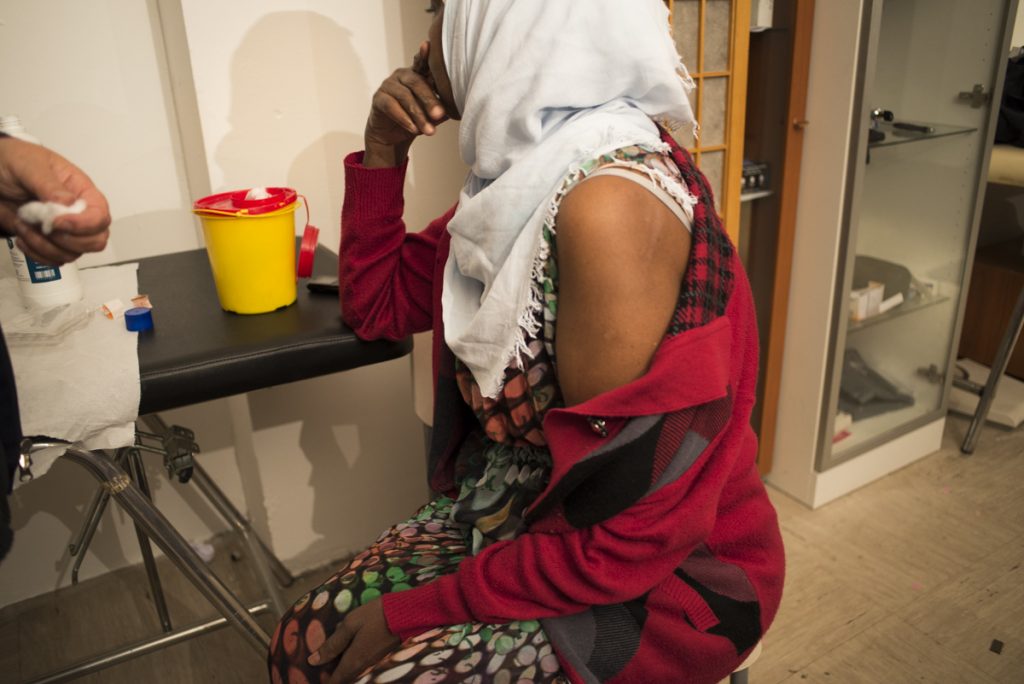
Selam Palace (foto: Federica Mameli)
That is also why volunteers from Cittadini del Mondo have been working on the expansion of the Intercultural Library, which they have been running out of a schoolhouse since 2008, to include Italian courses for refugees. “There is an ongoing violation of human rights here. Only recently did we manage to have the occupants registered as ‘fictitious’ residents in this municipality. Up until now, they’d been registered as residents on Via Giolitti, Via Dandolo, and Via degli Astalli, in the city centre,” D’Angelo explains. “This meant that, for years, they were an invisible presence in the neighbourhood. Registration enables them to access social services such as family clinics, healthcare, kindergarten or mental health departments.” Through negotiations with the city, 150 people have been registered since May, Donatella adds.
As we are speaking, an Eritrean woman named Tirse complains of severe pain in a knee, which is visibly swollen: D’Angelo eventually diagnoses that she has a splinter stuck inside. In the four years she has been seeing her, the patient has never once complained. “I see a lot of splinters everywhere. People from war zones bear the marks of the past on their bodies, but will often keep silent about them, partly because they don’t know how to express themselves well,” she says. “The biggest problem is when they are sick. I have a hard time understanding their symptoms; I get help from the interpreters but it’s a difficult job.” D’Angelo also sees patients at her practice on Via Tuscolana. They call her “the foreigners’ doctor”. Detractors call her “the niggers’ doctor”. “I’ve always come here with the hope that someday these people will be integrated and I’ll be able to examine them at my practice, but that is still a long way away.”
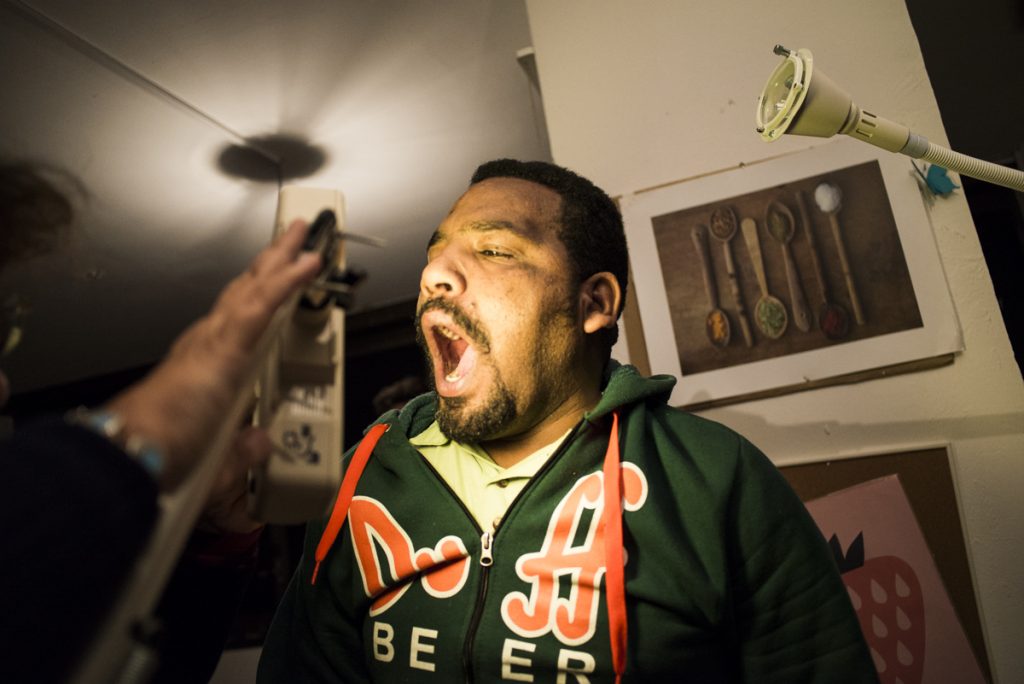
Selam Palace (foto: Federica Mameli)
The occupied building on Via Collatina
Hundreds of mostly Eritrean refugees also live in the squat on Via Collatina, to the east. The building has received about 50 of those who were evicted from Via Curtatone. Martina welcomes us at the entrance on her pink bicycle: 10 years old and with piercing eyes, she takes us on a tour of the first floor. The building was occupied in 2004 after yet another evacuation: on the ground floor, there is a mini-market and a recreation room. A prefabricated unit has been turned into a barbershop. But the few refugees present are not eager to speak with reporters. The threat of eviction is palpable here, and the occupants are suspicious. They are relying on themselves, and very few associations come to provide assistance. According to Comunità di Sant’Egidio, this is another example of a poor man’s squat. “These are mostly Eritrean families – certified as refugees – who are living in poverty and uncertainty. They wish they had access to housing projects, but everything has been at a standstill for years, so they are forced to live here,” Francesca Orlando, in charge of the Scuola della pace di Sant’Egidio in Tor Sapienza, explains. At the school, volunteers are working with some of the squat’s children: “once a week, we help them with their homework in our offices. Everyone is involved: Italians, foreigners, and Roma people. Many of these children were born here. We also work with their families, forging relationships that are not based purely on assistance.”
The occupied building on Viale del Policlinico
Askali, an Eritrean woman who arrived in Italy in 1974, tried to apply for housing. “I had two small children and was on my own. I nearly met the criteria, but then the ranking lists were frozen,” she told us. “I was living in a rented apartment with my children and working as a housekeeper. When my landlord put the building up for sale, I rented another place until I couldn’t afford it anymore and became a squatter.” The building where Askali is living today is on Viale del Policlinico, near Umberto I hospital. Over the course of eight years, several families from various countries have settled here. The largest groups are Eritreans and Moroccans, but there are also families from Eastern European countries.
Askali’s son, Samuel, is 31 and has dual Italian and Eritrean citizenship. His mother sent him to military service in Sawa, a training centre near Asmara, for two years. “It was terrible, I was crying every day, I didn’t know anyone and I was afraid I wouldn’t be able to return,” he told us, “but since I am half Italian they reassured me that it was only temporary. But the people I saw there were in awful conditions: sick people, fathers who were unable to go back home. And I realised that people were leaving Eritrea out of despair.” Samuel explains that Eritreans in the building hold different views of Afewerki’s regime: the elderly will not criticise the dictator while young ones, like him, have radically different opinions.
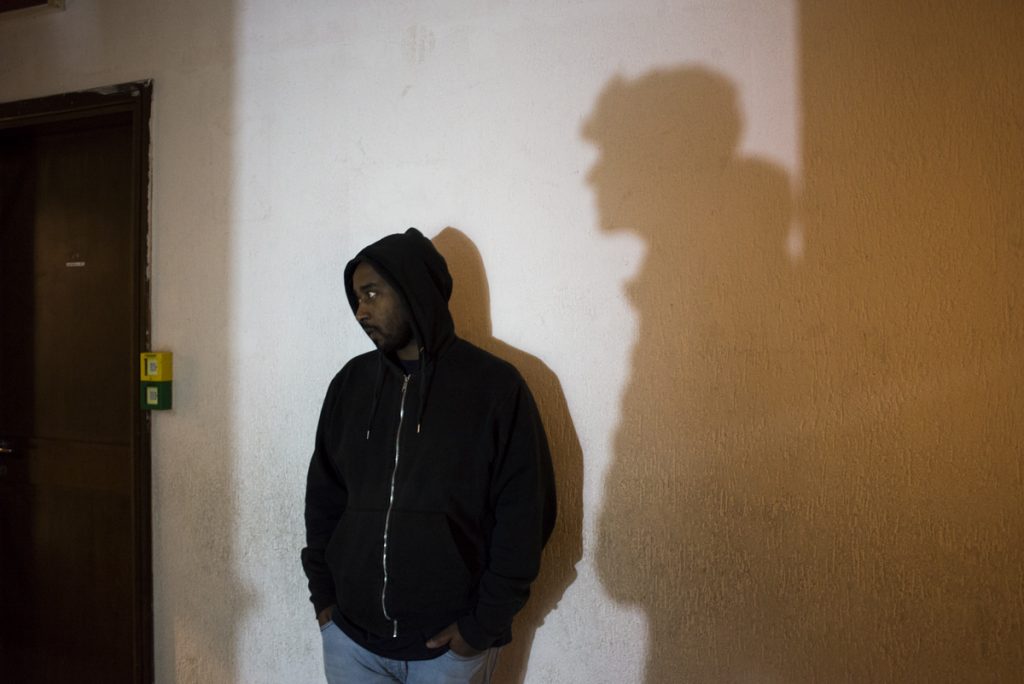
Viale del Policlinico (foto: Federica Mameli)
On the stairs, children are playing catch. Hikmet, also Eritrean, welcomes me into her home. A single room, only a few square metres wide, with everything in it: a pullout couch, a closet, a fridge, a dining table. The walls are plastered with religious symbols: a picture of Saint Michael, a lamp with Padre Pio, a portrait of Pope John Paul II. “Where will we go if they send us away? I’ll go sleep over there–you see that small shrine of the Virgin Mary across the street?” she said, pointing out the window. Hikmet and another Eritrean friend pray every day, they say, for rumours of an imminent eviction to be dispelled. For the moment, it seems like their prayers have been heard, at least in the city offices. At present, no evacuation is scheduled.
As per a decision by the Regional Administrative Court upholding the action of the building owners, the City of Rome was to evacuate the property by November 21st, a deadline set by the court itself. The order was suspended, however, following a safety audit on the building and a census on the occupants: 45 families of about 120 people, some of them living in unsanitary conditions, and 30 children. Meanwhile, on October 23rd, the city launched a public tender for the creation of “temporary reception facilities comprised of several, possibly prefabricated, units with a maximum capacity of 100”. The decision references the Minniti memo which prevented further evacuations of buildings in the absence of alternative options for the occupants, and recommended special attention to be given to vulnerable subjects. “The protection of socially and financially disadvantaged families must take priority in defining the procedures for evacuation.” Accordingly, temporary housing facilities will house “families in extremely fragile conditions or individuals in cases of emergency, of great social vulnerability or eviction”.
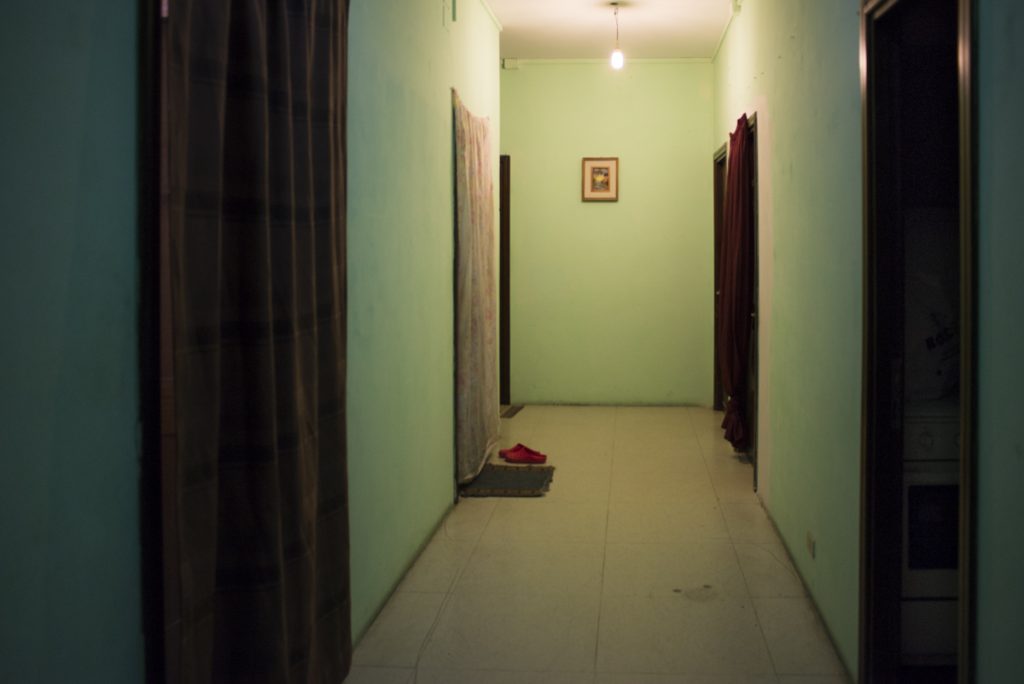
Viale del Policlinico (foto: Federica Mameli)
Is shared management still possible in Rome?
“People living in large squats in urban areas are the result of several gaps in the asylum system, gaps that we have been reporting for years,” Andrea De Bonis, Protection Officer at the UNHCR, said. “For the longest time, there has been a lack of adequate assistance measures. Nowadays, only those who enter the SPRAR system are entitled to housing for six months post-registration; but, in most cases, people come out of the reception centres with no chance of being included in society. Now the Ministry of the Interior has presented an integration plan which we have been able to appreciate and contribute to and which provides for substantial investment in resources.”
In the case of Rome, De Bonis also pointed out that, even for the UNHCR, “it is difficult to initiate a debate on the issues of housing and refugee occupations,” because they are part of the larger housing emergency in the city, an emergency which does not only involve foreign nationals. In recent weeks, the UNHCR also met with Mayor Virginia Raggi and city councillor Laura Baldassarre in the hope of coordinating efforts and replicating the success of Turin, where the former occupants of Ex-Moi are being transferred. “Everything in Turin is going smoothly and without any tension thanks to month-long negotiations,” De Bonis added. “The city, the region, the greater metropolitan area, the prefecture, the dioceses, and civil society groups have all been involved. This, to us, is a model of shared management.”
Cover image: Selam Palace (all photographs in this article by Federica Mameli)
Translation by Francesco Graziosi. Proofreading by Alex Booth.




